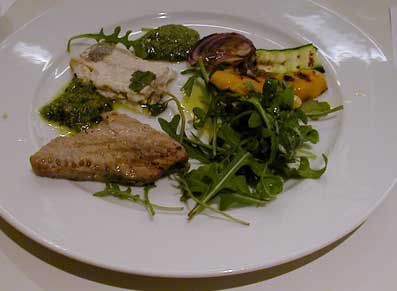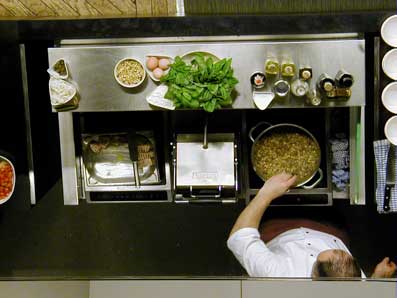 We’ve come a long way since olive oil was only sold in chemists specifically to be poured into a young boy’s ears to loosen blockages (ask me how I know!). The idea of cooking with the stuff certainly never crossed my mother’s mind and even if it had, the bottles were so small it would hardly have been cost-effective.
We’ve come a long way since olive oil was only sold in chemists specifically to be poured into a young boy’s ears to loosen blockages (ask me how I know!). The idea of cooking with the stuff certainly never crossed my mother’s mind and even if it had, the bottles were so small it would hardly have been cost-effective.
Today we in the UK have embraced the golden fluid and rare is the kitchen that doesn’t have a bottle in the cupboard. And that bottle likely as not will be one of Filippo Berio’s who have been producing olive oil a very long time indeed. In fact they were the first brand to be registered in the USA in 1896 and if you want some more facts, then think on this: 3 million tonnes of olive oil are produced every year and the oldest olive tree is in Crete and estimated to be over 2000 years old.
Most people will only have one type of olive oil in the cupboard but dedicated foodies know that olive oils are like wines, rich in variety and better with some foods than others. Tasting sessions like the one we are at today bring out those differenced and as you warm the oil in your hand – real aficionados don’t bother with a glass – you can sniff the aromas released and pick up on the five essential attributes – the fruitiness that tells you the olives were picked at the peak of their ripeness, the green grassiness, a sweet but not sugary taste, a bitterness which is essential and a pepperiness on the palate.
Along the way we are disabused of a few myths. There is really no such thing as a first pressing any more; modern extraction methods will get 98% of the available oil out of the olive first time. In the old days however, a second pressing using hot water was made in order to extract the remaining oil and so that first ‘cold’ pressing was always considered to be the best. Secondly we learn that Extra Virgin simply means the taste testers have passed the oil as prime quality. Oil that doesn’t pass the test is instead used to make simpler, cheaper blends. Thirdly, there is nothing wrong with cooking with olive oil at high temperatures. The only thing you can’t do is deep fry with it, but surely no one would ever try that!
Using the right olive oil for the right dish is important, like wines they can partner food or fight with it. Unfortunately the idea of keeping a selection in the store cupboard is not workable – even when kept closed and in a cool, dark place, olive oil once opened begins its sad decline. So don’t buy great big tins, instead buy small bottles regularly, that way your consumption will outpace the oil slowly going off. Needless to say, Filippo Berio make lots of small bottles of their various oils which include Extra Virgin, Mild & Light, Organic Extra, Unfiltered Extra Virgin, and a spray which minimises waste when dressing salads or when frying.
Olive Oil in the diet
For once something that tastes great isn’t bad for you, quite the opposite in fact. It’s high in monounsaturated fats and anti-oxidants as well as a rich abundance of vitamins, A, E and D. It’s also an excellent nutritional source for growing children. It’s easy to add olive oil to your diet in salad dressings, marinades, dips and when used to replace butter such as when making garlic bread or served with new potatoes.
Chef Danilo Trozzi then cooked up some great recipes, featurng of course lashings of olive oil. And here they are for you to try at home all in one handy pdf!
Cliek here
Tuscan Dressing
Classic Pesto Sauce
Tuscan Bean Soup
Salsa Verde
Bagna Cauda (for serving over Grilled Vegetables)

